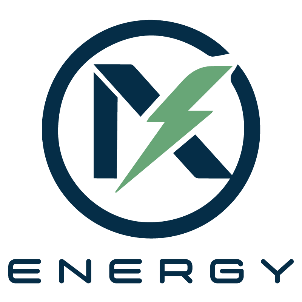
Q1: IX Energy’s journey reflects a transition from early vehicle electrification to scalable hybrid and retrofit solutions. How has your technology and business model evolved with changing climate and mobility priorities?
IX Energy began experimenting with early-stage electric vehicle conversions before realizing that true scalability lay in retrofit-based hybrid and full-electric solutions. Our business model evolved from one-off R&D conversions to a modular, standardized retrofit kit adaptable across vehicle categories. This pivot was driven by India’s climate goals, cost-sensitive markets, and state-level EV policies encouraging fleet electrification. Today, we combine engineering innovation with a circular economy model—reviving existing ICE fleets rather than replacing them.
Q2: Battery production is increasingly scrutinized for its material and carbon intensity. How is IX Energy addressing sustainability across the battery value chain—sourcing, design, and end-of-life?
We approach battery sustainability through three pillars: localization, longevity, and loop closure. Our battery packs use LFP chemistry for safer, longer cycles and reduced dependency on critical minerals. Sourcing is aligned with domestic suppliers to reduce logistics emissions. Each pack is designed for second-life applications in stationary storage, and we partner with recyclers for material recovery. Our design undergoes a full life-cycle assessment (LCA) to ensure every stage—from cell to scrap—contributes to carbon reduction.
Q3: As you move from R&D to commercial scale, what is your five-year projection for avoiding CO₂ emissions, and how do you define climate-aligned growth?
At IX Energy, we define climate-aligned growth not just by tailpipe emission reduction but by avoiding embodied carbon through reuse. Retrofitting a single 3.5-ton truck prevents approximately 5–6 tonnes of CO₂ emissions that would otherwise arise from recycling and remanufacturing steel for a new vehicle. Over the next five years, we aim to retrofit 10,000+ commercial vehicles, cumulatively avoiding over 200,000 tonnes of CO₂. Our performance-linked leasing for hybrid-electric conversion models make electrification financially viable, while telematics-based tracking quantifies real-world emission avoidance, ensuring every retrofit contributes transparently to India’s decarbonization journey.
Q4: Fleet electrification transforms local jobs and skills. How does IX Energy support a “Just Transition” for drivers and mechanics?
IX Energy provides structured training for local mechanics and drivers—covering EV safety, battery diagnostics, and energy-efficient driving. We are partnering with fleet operators , local workshops, and other retrofitters to create a network of certified retrofit and service partners. This ensures inclusiveness in the EV shift, turning traditional auto workers into EV-ready technicians and fostering local employment resilience.
Q5: India’s diverse conditions—from high heat to humidity—affect EV performance. What R&D insights have helped you optimize reliability and efficiency in such environments?
Our R&D team has developed thermal management and adaptive control systems tuned to India’s climatic diversity. We’ve engineered passive cooling channels and intelligent motor controllers that optimize power draw under heat and load variations. our retrofit kits maintain stable performance with minimal degradation. These insights offer a competitive edge over imported systems that are often optimized for different temperate climates.
Q6: How do you account for real-world degradation when estimating lifetime emissions reduction?
We factor in battery degradation curves and drivetrain efficiency decay within our emission models. Continuous monitoring via IoT-based BMS and motor controllers enables predictive maintenance and verifiable emission tracking. Our warranty and performance guarantees are data-backed, ensuring customers—and policymakers—can trust the real-world carbon savings achieved over the vehicle’s extended lifespan.
Q7: As global standards evolve (e.g., EU Battery Regulation, zero-emission mandates), how is IX Energy preparing for compliance and market readiness?
IX Energy works closely with suppliers who are continuously evolving to meet the latest global regulations and standards. As a startup, staying updated with these frameworks is crucial—it allows us to collaborate efficiently and ensure that every component sourced or developed not only meets the functional requirements of our retrofit applications but also complies with emerging safety norms and zero-emission mandates. This proactive approach ensures our technology remains globally compatible and future-ready as the industry transitions towards stricter compliance and sustainability benchmarks.

Anshu Dewan, Founder, IX Energy
Anshu is driving India’s retrofit revolution through technology, innovation, and impact. With a background in Engineering and Management, he has built IX Energy around the principle of extending asset life to achieve deep decarbonization. His leadership reflects a balance of technical depth and climate-driven entrepreneurship aimed at reshaping India’s commercial mobility landscape.
Background of IX Energy
IX Energy is an Indian clean mobility company enabling sustainable electrification through retrofit technology. By converting existing commercial vehicles into hybrid and full-electric variants, IX Energy champions the circular economy while reducing lifecycle emissions. The company’s modular electric kits and performance-linked leasing models are designed to make EV adoption accessible, scalable, and climate-positive for fleet operators across India.